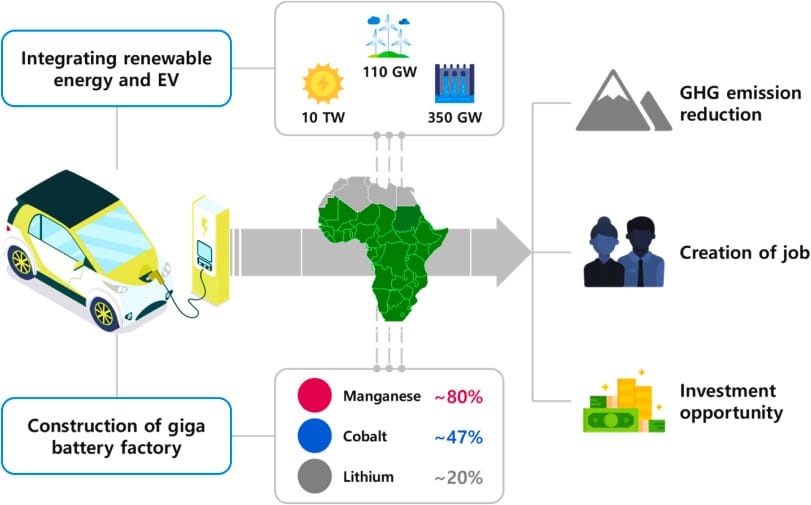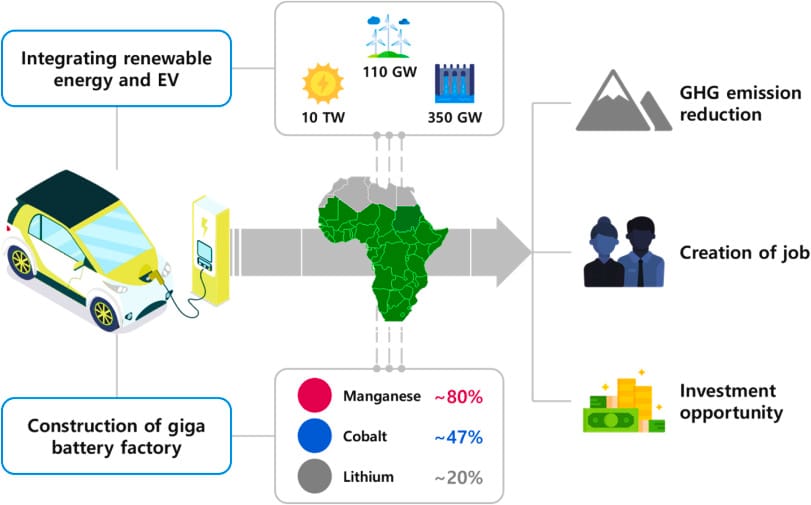
In recent years, the global shift towards sustainable transportation has gained significant momentum, with electric vehicles (EVs) emerging as a frontrunner in the race to decarbonize the transport sector.
While much of the focus has been on developed nations, the electric vehicle revolution is also making inroads in Sub-Saharan Africa, where unique challenges and opportunities shape its trajectory.
Read: Steps towards adoption of electric vehicles globally.
Trends:
Sub-Saharan Africa is experiencing a growing interest in electric vehicles, driven by several key trends:
- Urbanization: Rapid urbanization in many African cities has led to increased congestion and pollution. As governments and citizens seek solutions to mitigate these challenges, electric vehicles present an attractive alternative with zero tailpipe emissions.
- Declining Costs: The cost of electric vehicles and batteries has been decreasing globally, making EVs more affordable and accessible in Sub-Saharan Africa. Additionally, the total cost of ownership of EVs, including maintenance and fuel, is often lower than that of traditional internal combustion engine vehicles.
- Policy Support: Several countries in Sub-Saharan Africa are implementing policies and incentives to promote the adoption of electric vehicles. These include tax breaks, import duty reductions, and subsidies for EV purchases.
- Infrastructure Development: Efforts to improve charging infrastructure are underway in various parts of the region, albeit at varying paces. Investments in charging stations, both public and private, are crucial for boosting consumer confidence in EVs.
Read: How to deal with the dominance of second-hand EVs in Africa.
Challenges:
Despite the promising trends, Sub-Saharan Africa faces several challenges that could hinder the widespread adoption of electric vehicles:
- Limited Infrastructure: The lack of adequate charging infrastructure remains a significant barrier to EV adoption. Many African countries lack the necessary electricity infrastructure to support a large-scale transition to electric vehicles.
- High Initial Costs: While the long-term cost savings of electric vehicles are evident, the upfront cost of purchasing an EV remains prohibitively high for many consumers in Sub-Saharan Africa, where income levels are lower on average.
- Range Anxiety: Range anxiety, or the fear of running out of battery charge while driving, is a prevalent concern among potential EV buyers. The limited range of electric vehicles, coupled with the scarcity of charging stations, exacerbates this issue in Sub-Saharan Africa.
- Battery Recycling and Disposal: Proper disposal and recycling of lithium-ion batteries used in electric vehicles present environmental challenges. Without adequate infrastructure for battery recycling, there is a risk of pollution and environmental degradation.
Related: How to solve the challenge of insufficient standardization of EV charging infrastructure.
Opportunities:
Despite the challenges, Sub-Saharan Africa also presents unique opportunities for the electric vehicle industry:
- Leapfrogging Traditional Infrastructure: With the right investments and policies, Sub-Saharan Africa has the potential to leapfrog traditional fossil fuel-based transportation systems and transition directly to cleaner, more sustainable electric mobility solutions.
- Job Creation and Economic Development: The shift towards electric vehicles could stimulate economic growth and create new job opportunities in manufacturing, infrastructure development, and renewable energy production.
- Partnerships and Collaboration: International partnerships and collaboration between governments, private sector stakeholders, and international organizations can accelerate the deployment of electric vehicles and charging infrastructure in Sub-Saharan Africa.
- Integration with Renewable Energy: Sub-Saharan Africa boasts abundant renewable energy resources, such as solar and wind power. Integrating electric vehicles with renewable energy sources can further enhance the environmental benefits of EVs and reduce reliance on imported fossil fuels.
Read: Opportunities for growth in African mobility
In conclusion, the electric vehicle revolution in Sub-Saharan Africa is gaining momentum, driven by urbanization, declining costs, and supportive policies.
However, significant challenges such as limited infrastructure and high initial costs must be addressed to unlock the full potential of electric mobility in the region.
By seizing opportunities for collaboration, investment, and innovation, Sub-Saharan Africa can pave the way toward a more sustainable and electrified transportation future.




